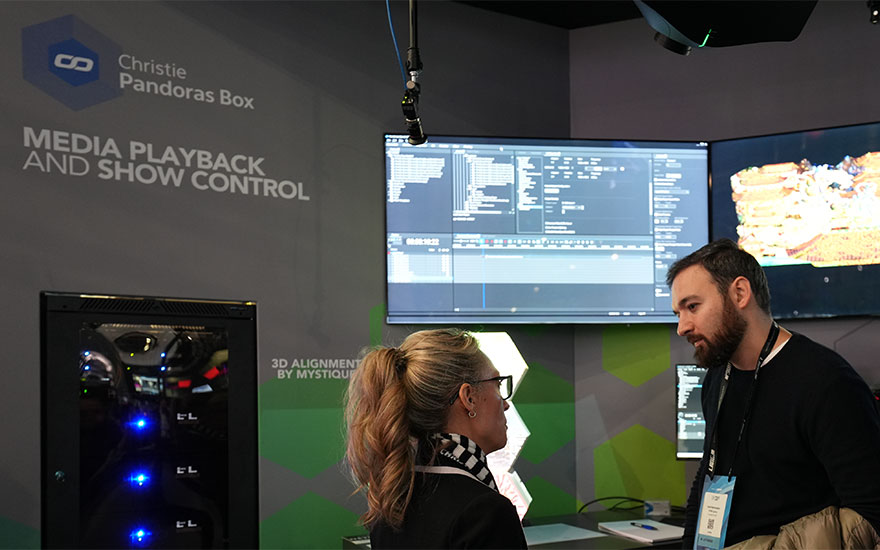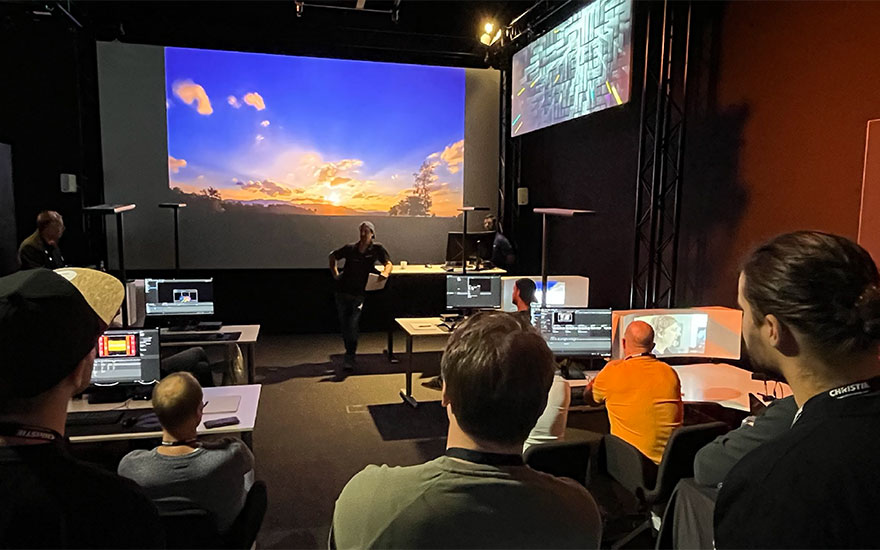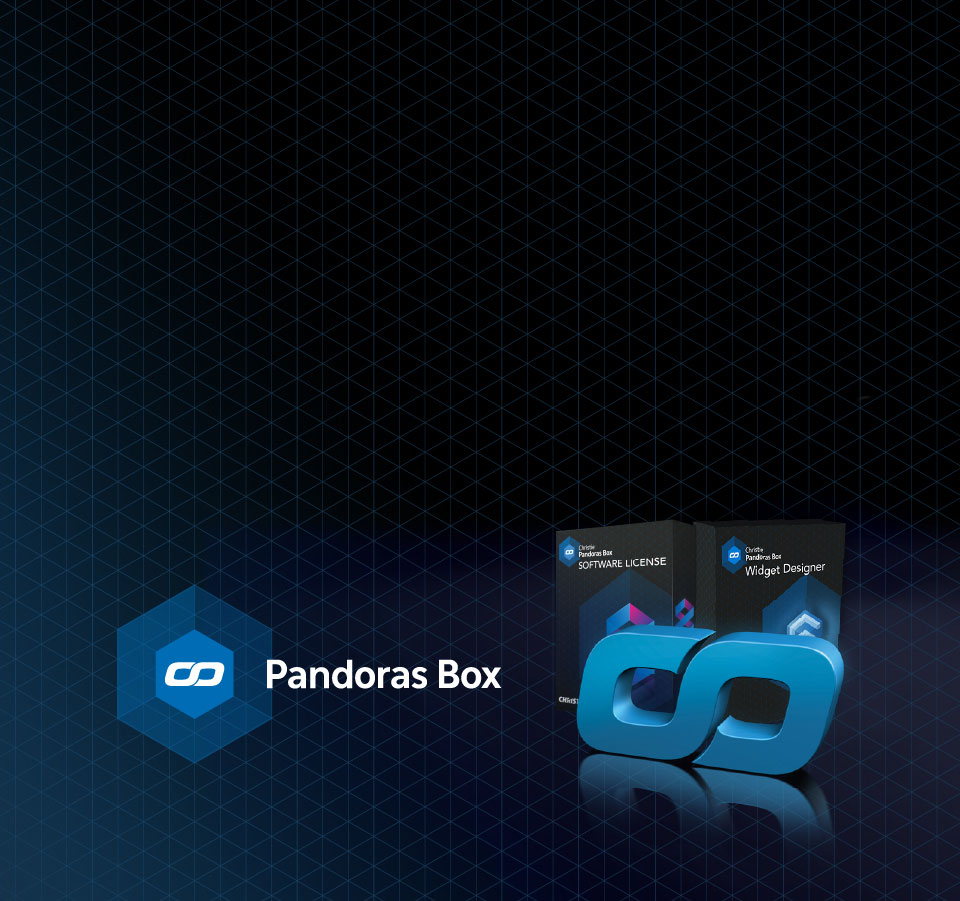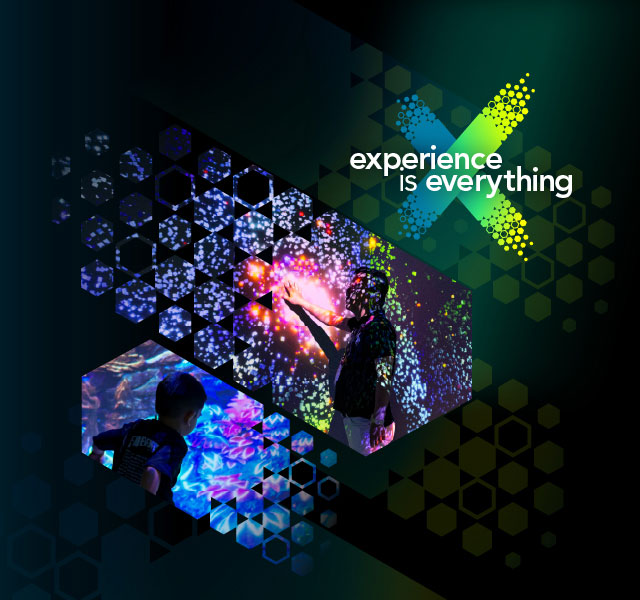From content management to show control, learn how Pandoras Box makes the magic happen at InfoComm
We’re getting ready for InfoComm 2025. From marketing to engineering, it’s all hands-on deck. A critical component of our plans is mapping out what and how we’re showcasing our technology at the show, including how we’re controlling all the experiences on our booth. And we’ll let you in on our worst-kept secret: our entire booth will be driven by Pandoras Box, our complete show control solution.
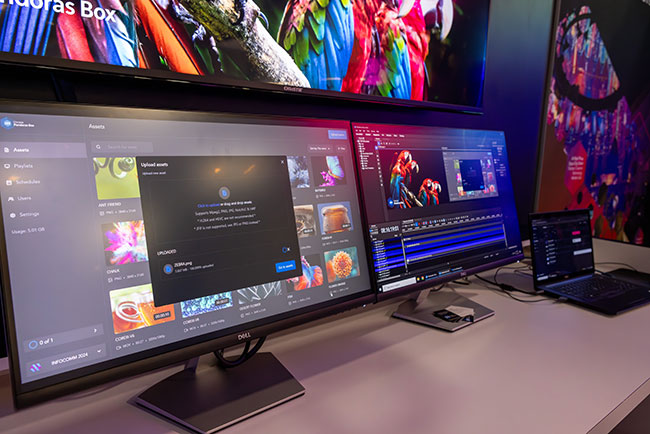
We spoke with our Pandoras Box team to learn how they’re preparing for InfoComm, what Pandoras Box solutions will be used, and some of the common challenges they’re planning for at the show.
Centralized control with Pandoras Box Servers and Software
“We’ll use every option we have,” says Brian Davis, senior solutions architect, broadly referring to our Pandoras Box suite of products that we’ll use to power the content that will be displayed on our booth at InfoComm 2025.
We’ll use centralized Pandoras Box Servers and Compact Players loaded with Pandoras Box Software to control all the displays. Servers are used as managers and clients: a Server designated as a manager acts as the “leader” and GUI that tells the Servers designated as clients, which output content to the displays, what to do.
“We usually have upwards of a couple of terabytes of content to manage across 20 or more displays, and Pandoras Box makes that easy to do.” - Brian Davis, senior solutions architect
Using Pandoras Box Servers as the centralized hardware controlling the booth has a few benefits. Firstly, it provides multi-user capabilities so multiple operators can share the workload. The Servers also allow us to manage as many clients as needed in the same or different locations. “It’s a versatile setup that’s synchronized from a centralized point", explains Thomas Mrozek, product manager
The team leverages this feature at trade shows, where changes can often happen at the last minute. “If we need to add more displays, we can plug a new client into the system instead of reconfiguring everything,” says Brian.
What about content?
“Pandoras Box is really good at content management,” says Brian, putting it bluntly. “We usually have upwards of a couple of terabytes of content to manage across 20 or more displays, and Pandoras Box makes that easy to do.”
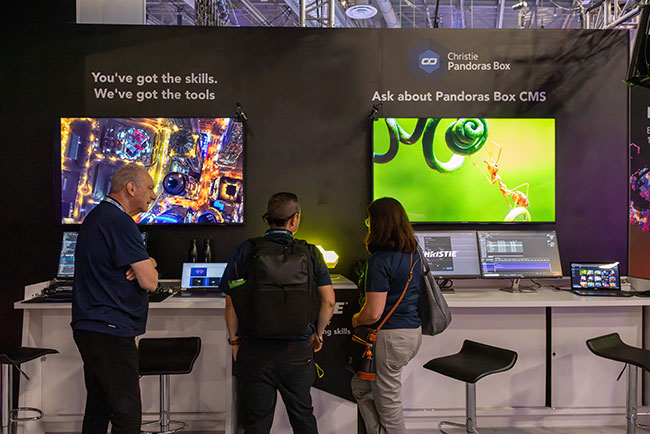
“For example, every experience we’re showing on the booth has its own sequence, which is a timeline in Pandoras Box, on our Servers. That way, we have one centralized ‘brain’, but the timelines are independent of each other,” explains Selina Davenport, global sales manager. Timelines are used to manage, control, and even sync content to every display that we’ll have on the booth.
“The neat thing about timelines is that we can push a single button to deploy the same content to every display at the same time,” adds Brian. “The entire booth can be synced down to the frame.”
And changes on the fly? “We can go into Pandoras Box Software to add, subtract, and edit content,” says Thomas.
For example, last year at InfoComm we showcased our MicroTiles LED in a multi-pixel pitch LED video wall with a text overlay that identified the different pitches. But the text was positioned on the right side of the screen, where it wasn’t easily visible within the content. “So we moved all the text to the left side of the screen at the start of the show,” says Brian. “We didn’t have to re-render or make new content.”
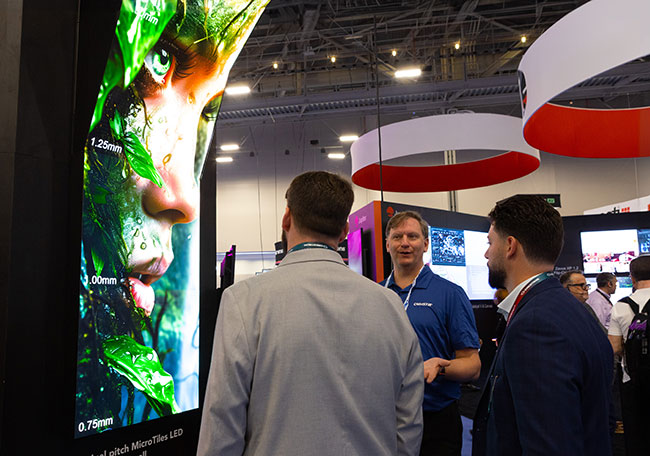
Precisely placing pixels
If you’ve seen our booth at previous trade shows, you know that we tend to think beyond the rectangle. This year’s InfoComm will be no different. For example, we’ll showcase projection-mapped artwork with every pixel precisely aligned using the warping feature in Pandoras Box Software. And our LED displays will be UV mapped (the process of projecting a 2D image to a 3D model surface for texture mapping) to ensure the content looks exactly as intended, regardless of pixel pitch or rotation of the display.
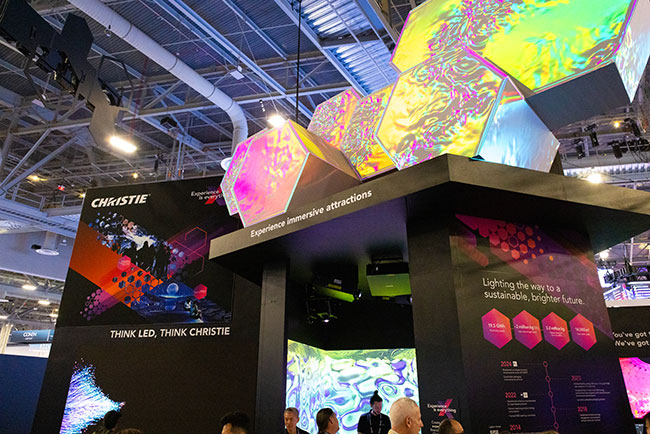
And a projection-mapped display of 3D hexagons will allow attendees to get hands-on with the 3D capabilities of Pandoras Box.
Time is the biggest challenge
Trade shows are complex undertakings. Not only do we plan for months before the show starts, the set-up itself is a hectic, intense undertaking.
When asked what the team’s biggest challenge is when setting up for InfoComm, Selina immediately answered, “Not enough time.”
“We need to wait for the booth to be built before we can begin sorting out display resolutions and transmission,” explains Thomas. “Cable management can be tricky. We could have a broken cable and need to switch to a backup line.” But the team takes these issues in stride. “This is common to not only trade shows, but live events.”
The size and complexity of our booth make using Pandoras Box an essential tool for InfoComm, especially when content changes at the very last minute. “Using any other solution would be too time-consuming. Pandoras Box allows us to get the booth up faster, with more than one person programming the Server simultaneously.”
Ultimately, Pandoras Box ensures that the content is delivered precisely onto each display we’ll have on our booth at InfoComm – or any live event. “If Pandoras Box was not involved, every screen in the booth would be black!” says Brian.
Visit us on booth #2542 at InfoComm 2025 to learn more about the impressive capabilities of our Pandoras Box suite of solutions.
